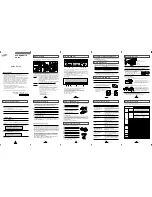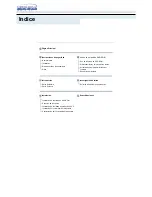
Derating for Running at Low Speed
When a motor is connected to a frequency converter,
it is necessary to check whether the cooling of the mo-
tor is adequate.
At low RPM values, the motor fan is not able to supply
the required volume of air for cooling. This problem
occurs when the load torque is constant (e.g. a con-
veyor belt) across the regulating range. The reduced
ventilation available decides the size of the torque that
can be permitted under a continuous load. If the motor
is to run continuously at an RPM value lower than half
the rated value, the motor must be supplied with addi-
tional air for cooling.
Instead of such extra cooling, the load level of the mo-
tor can be reduced. This can be done by choosing a
bigger motor. However, the design of the frequency
converter sets limits as to the size of motor that can be
connected to it.
Derating for Installing Long Motor Cables or Ca-
bles with Larger Cross-section
The frequency converter has been tested using 300 m
unscreened cable and 150 m screened cable.
The frequency converter has been designed to work
using a motor cable with a rated cross-section. If a ca-
ble with a larger cross-section is to be used, it is recom-
mended to reduce the output current by 5% for every
step the cross-section is increased.
(Increased cable cross-section leads to increased ca-
pacity to earth, and thus an increased earth leakage
current).
Derating for high switching frequency
A higher switching frequency (to be set in parameter
411) leads to higher losses in the electronics of the
frequency converter.
If
SFAVM
has been selected in parameter 446, the fre-
quency converter will automatically derate the rated
output current I
VLT,N
when the switching frequency ex-
ceeds 3.0 kHz.
If
60°AVM
is selected, the frequency converter will au-
tomatically derate when the switching frequency ex-
ceeds 4.5 kHz. In both cases, the reduction is carried
out linearly, down to 60% of I
VLT,N
. The table gives the
min., max. and factory-set switching frequencies for
frequency converter. The switching pattern can be
changed in parameter 446 and the switching frequen-
cy in parameter 411.
SFAVM
60 deg. AVM
Min. [kHz]
Max. [kHz]
Fac. [kHz]
Min. [kHz]
Max. [kHz]
Fac. [kHz]
VLT 5001-5006, 200 V
3.0
5.0
3.0
3.0
10.0
4.5
VLT 5008-5027, 200 V
3.0
10.0
3.0
3.0
14.0
4.5
VLT 5032-5052, 200 V
3.0
4.5
3.0
3.0
4.5
4.5
VLT 5001-5011, 500 V
3.0
5.0
3.0
3.0
10.0
4.5
VLT 5016-5052, 500 V
3.0
10.0
3.0
3.0
14.0
4.5
VLT 5062-5102, 500 V
3.0
4.5
3.0
3.0
4.5
4.5
VLT 5122-5302, 500 V
3.0
3.0
3.0
3.0
4.5
4.5
VLT 5352-5552, 500 V
1.5
2.0
2.0
1.5
3.0
3.0
VLT 5001-5011, 600 V
3.0
5.0
3.0
4.5
7.0
4.5
VLT 5016-5027, 600 V
3.0
10.0
3.0
3.0
14.0
4.5
VLT 5032-5052, 600 V
3.0
7.0
3.0
3.0
10.0
4.5
VLT 5062, 600 V
3.0
4.5
3.0
3.0
4.5
4.5
VLT 5042-5302, 690 V
1.5
2.0
2.0
1.5
3.0
3.0
VLT 5352-5602, 690 V
1.5
1.5
1.5
1.5
2.0
2.0
VLT
®
5000 Design Guide
MG.52.B2.02 - VLT
®
is a registered Danfoss trademark
115
Special
conditions
















































